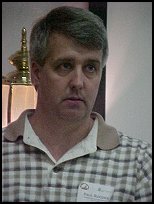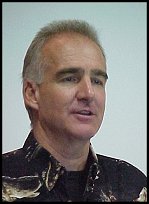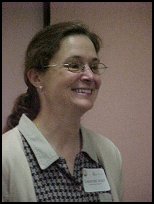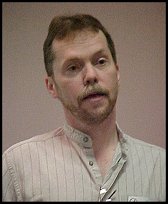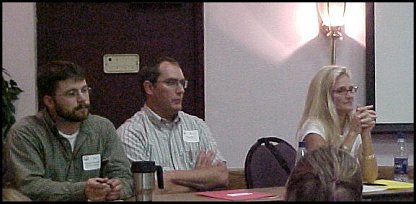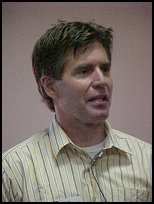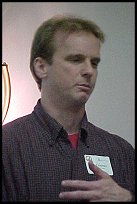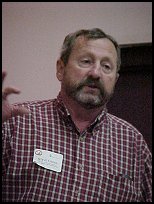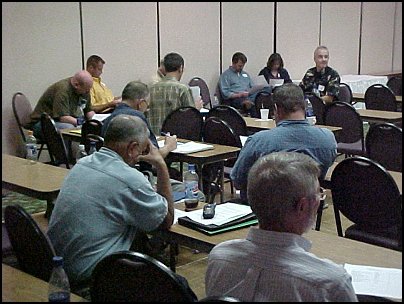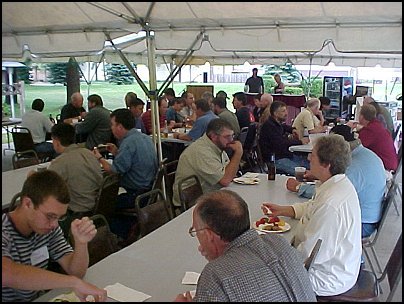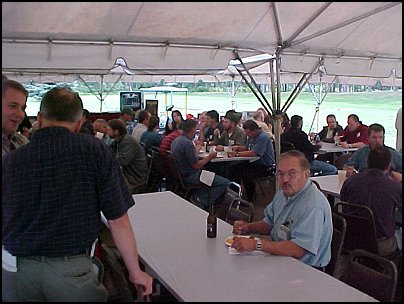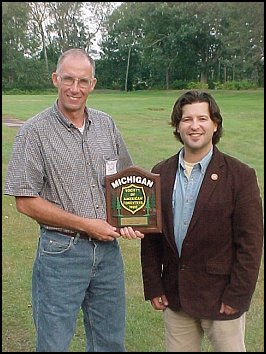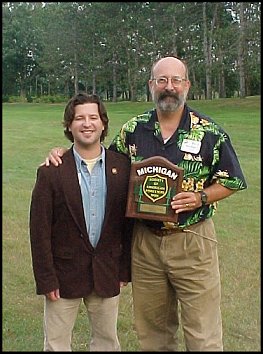|
|
||||

Perception, Partners,
and Prescribed Fire
A
joint conference with the
8-9 September,
2006
Cadillac Woods Resort,
|
8 Sep. 2006 |
Indoor Sessions - Friday |
|
MPFC Chair, Paul Rogers and MSAF Chair, Don Howlett, welcomes conference participants This was the first joint conference between the Michigan Prescribed Fire Council and the Michigan Society of American Foresters. The conference offered a slate of speakers addressing several aspects of prescribed fire and applications. A number of field tours were scheduled the second day, demonstrating multiple ways that fire can be used to resource management objectives. |
|
|
|
Christine Vogt, Michigan State University, speaks about research assessing the public perception of fire. Presented a study conducted on the Huron-Manistee
National Forest about perceptions people have about fire. Two survey
instruments; one in 2002 and a second in 2006 (most returns prior to
the Hughes Lake fire). Used focus groups prior to surveying. There is
a fire history of prescribed burning in the area due to Kirtland's warbler
management. Many seasonal homes. The study can segregate responses by
seasonal vs. permanent residency. Examined resident perceptions of the
DNR vs. the Forest Service. Tested knowledge of prescribed burning,
mechanical fuels reduction, and defensible space. Assistance from the
tax assessor helped identify sampling demographics. Mailed 2352 surveys
in 2002, response of 1244. Mailed 2805 surveys in 2006, response of
1346. 50% respondents retired, 40% non-resident, 35% working full-time.
About 2/3 respondents desired more information about the three control
methods (burning, mechanical, defensible space). Most desired information
delivery vehicles were brochures, websites, and then meetings. Trust
in public agencies is lukewarm. There are sister studies in other parts
of the USA, including one in Grand Haven. |
|
|
Gary Stock, a private landowner,
shares his experience in using many management tools, including prescribed
fire, to optimize habitat for box turtles in southwest Michigan. Gary owns land in southwestern Michigan and maintains
a special interest in box turtles. There are several large turtle populations
in the area. Gary works with other landowners and deveopment companies
to further the interest of turtle habitat and more environmentally responsible
and sensitive land use. Uses a variety of methods to manage properties,
including prescribed fire. He has utilized the federal Landowners Incentive
Program (LIP). He provided a website called "With the Grain"
at [www.wtgrain.org]. The mission "is
dedicated to educating people about their effect on the environment,
and motivating them to make informed, responsible decisions." |
|
|
|
|
|
Brian Palik is part of a research group re-evaluating a
red pine underburn study in northern Minnesota. |
|
|
Jay Charney reviews a number of smoke management models and looks to the future. Weather
predictive models used for fire applications were reviewed. Two examples
of simple emission productive models were given. These tools help predict
how much smoke may be generated by a fire. Simple approximation models
(where will the smoke go?) include "puff" models that predict
direction assuming no change in air currents. They are a bit crude but
have a role in fire management. Dispersion models are much more integrated
and complex. Individual particle paths and concentrations can be tracked.
Weather input variables can changed. Assessments and predictions can
be made about health risks, visual quality, and other outcomes. "Blue
Sky" is one such integrated program that incorporates several "black
box" models. Blue Sky uses a GIS, has a user interface, and a purposeful
meterological fire application. It's currently operational but not yet
fully released. The tool will generate a 48-hour forecast of smoke density
and movement. Jay ran a demo of the program. . |
|
|
Steve Cross wraps-up the day for the participants. |
|
|
|
|
|
|
|
Mike Castle Receives
Bill Cook
receives the |
|
![]() TOP Press arrow to return to the top of this page.
TOP Press arrow to return to the top of this page.
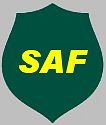
This website is maintained
by Bill Cook,
Last update of this page was
29 September, 2006
This site is hosted by School of Forest Resources and Environmental Science at Michigan Technological University.
